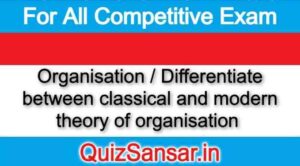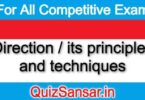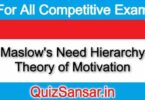
Organisation / Differentiate between classical and modern theory of organisation
Meaning of organization
An entrepreneur organizes various factors of production like land, labour, capital, machinery, etc. for channelizing them into productive activities. The product finally reaches consumers through various agencies. Business activities are divided into various functions, these functions are assigned to different individuals.
Various individual efforts must lead to the achievement of common business goals. Organization is the structural framework of duties and responsibilities required of personnel in performing various functions with a view to achieve business goals through organization. Management tries to combine various business activities to accomplish predetermined goals.
According to Koontz and O’Donnell, “The establishment of authority relationships with provision for co-ordination between them, both vertically and horizontally in the enterprise structure.”
Classical Organisation Theory: The Classical writers viewed organization as a machine and human beings as components of that machine. They were of the view that efficiency of the organization can be increased by making human beings efficient. Their emphasis was on specialization and co-ordination of activities. Most of the writers gave emphasis on efficiency at the top level and few at lower levels of organization. That is why this theory has given streams; scientific management and administrative management. The scientific management group was mainly concerned with the tasks to be performed at operative levels.
Henry Fayol studied for the first time the principles and functions of management. Some authors like Gullick, Oliver Sheldon, Urwick viewed the problem where identification of activities is necessary for achieving organization goals. Grouping or departmentation was also considered essential for making the functions effective. Since this theory revolves around structure it is also called ‘structural theory of organization.”
Pillars of Organisation Theory
According to classical writers, the organization theory is built around four key pillars division of work, scalar and functional processes, structure and span of control.
(i) Division of Labour : Division of labour implies that work must be divided to obtain specialization with a view to improve the performance of workers. The classical theory rests on the assumption that more a particular Job is broken into its simplest component parts, the more specialized a worker can become in carrying out his part of the job.
The specialization in workers will make the organization efficient. Various activities of a Job are specified and subdivided into different components so that these may be assigned to different persons. The workers will go on repeating their work under division of labour. The performance of same work will help workers to improve their efficiency and the organizati a whole is benefitted by this exercise.
(ii) Scalar and Functional Process: The scalar process refers to the growth of chain of command, delegation of authority, unity of command and obligation to report. It is called scalar process because it provides a scale or grading of duties according to the degree of authority and responsibility. It generates superior-subordinate relationship in the organization. The functional process deals with the division of organization into specialized parts or departments and regrouping of the parts into compatible units.
(iii) Structure: It is the framework of formal relationships among various tasks, activities and people in the organization. The basic structural element in the classical theory is position. Each position is assigned a specific task and authority is delegated for its accomplishment. Position is assigned a specific task and authority is delegated for its accomplishment. The efficiency with which these tasks will be accomplished will determine the effectiveness of the organization. The classical writers emphasized line and staff organizations.
(iv) Span of Control: The span of control means the number of subordinates a manager can control. Classical thinkers specified numbers at different levels which can be effectively supervised by a superior. A manger cannot exercise proper control if the number of subordinates increases beyond a certain figure, on the other hand if the number is less then his capacity and knowledge cannot be fully utilized.
Appraisal of Classical Theory
The classical theory suffers from some restraints. Some of its drawbacks are given as follows:
1. Classical thinkers concentrated only on line and staff structures. They did not try to find out the reasons if a particular structure is more effective than others.
2. This theory did not lay emphasis on decision-making processes.
3. Human behavior was ignored in this theory. Classical thinkers did not realize the complexity of human nature. They take human beings as inert instrument of organization performing the assigned task.
4. The assumption that organization in a closed system is unrealistic. Organisation is greatly influenced by environment and vice versa. A modern organization is an open system which has interaction with the environment.
Modern Organisation Theory: Modern organization theory is of recent origin, having developed in early 1960’s. This theory has tried to overcome the drawback of earlier theories. In the words of W. G. Scott, “The distinctive qualities of modern organization theory are its conceptual analytical base, its reliance on empirical research data and, above all, its integrating nature. These qualities are framed in a philosophy which accepts the premise that the only meaningful way to study organization is to study it as a system.” This theory may be understood in two approaches: Systems approach and contingency approach.
Systems Approach: This approach studies the organization in its totality. The mutually dependent variables are properly analysed. Both internal and external variables are studied in analyzing the nature of organization. Though this theory passes a much higher conceptual level as compared to earlier theories but different writers have given varied views of the system.
Organisation as a system can well be understood by identifying various subsystems within it. Each sub-system may be identified by certain processes, role, structures and norms of conduct. Seiler has classified four components in an organization, human inputs, technological inputs organizational inputs and social structure and norms.
Contingency Approach:
Even though systems approach presents a better understanding of organizational and managerial functioning but it does not provide solution for all types of organizational Structures. Systems approach offers models which may not suit every type of organization. A structure suitable for one unit may not be suitable for another. Contingency approach suggests an organizational design which suits a particular unit. A structure will be suitable only if it is tailor made for an enterprise. The influence of both internal and external factors should be considered while framing a suitable organizational structure. This approach suggests that needs, requirements, situations of a particular concern should be considered while designing an organizational structure.






